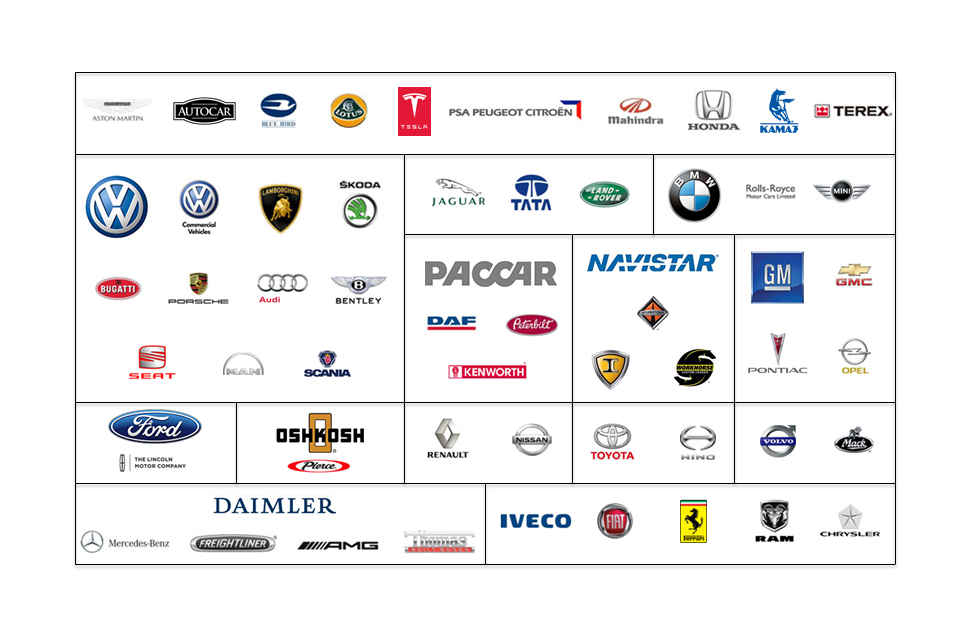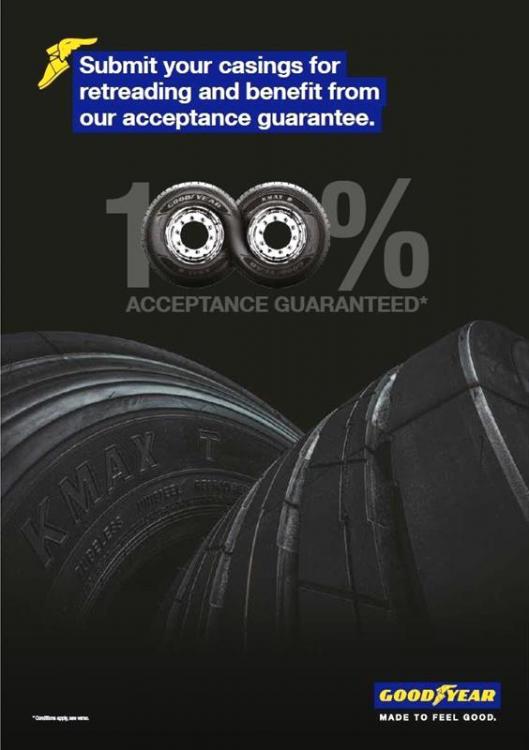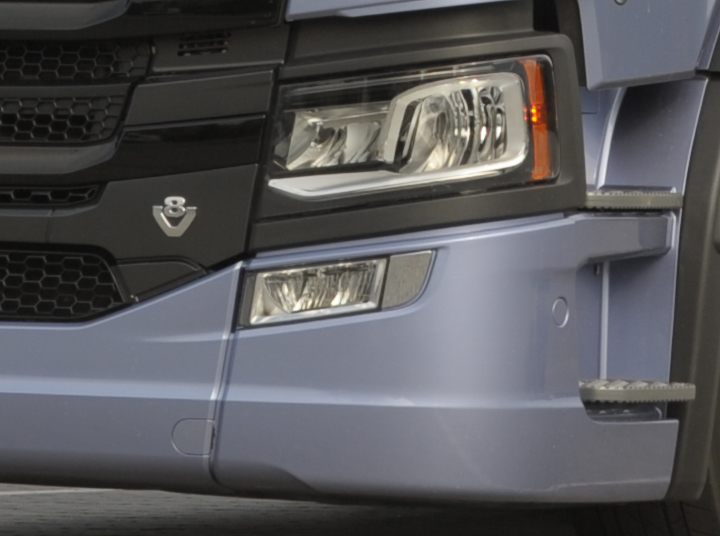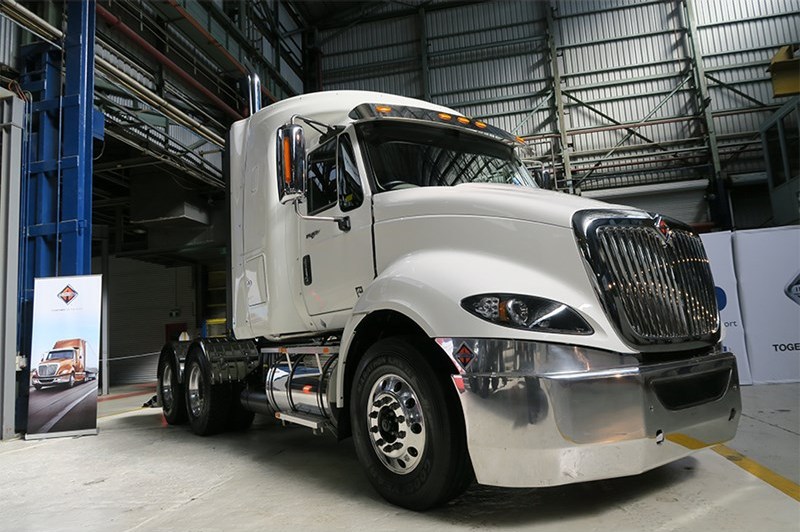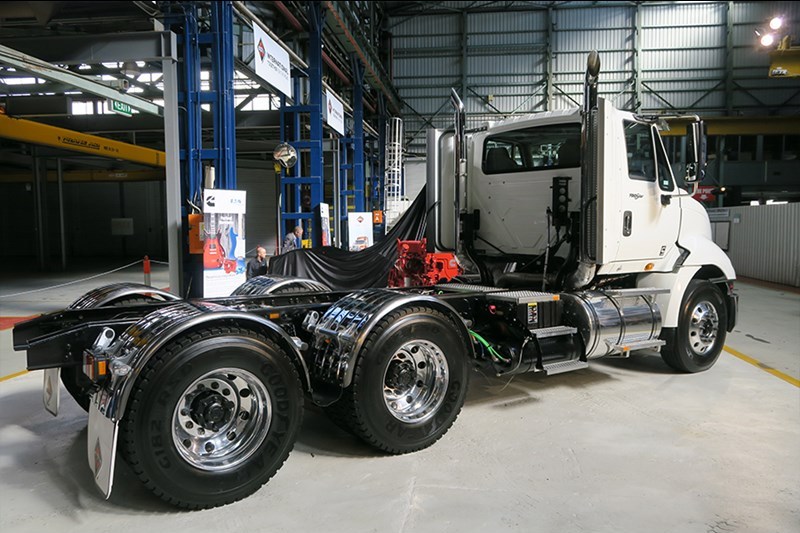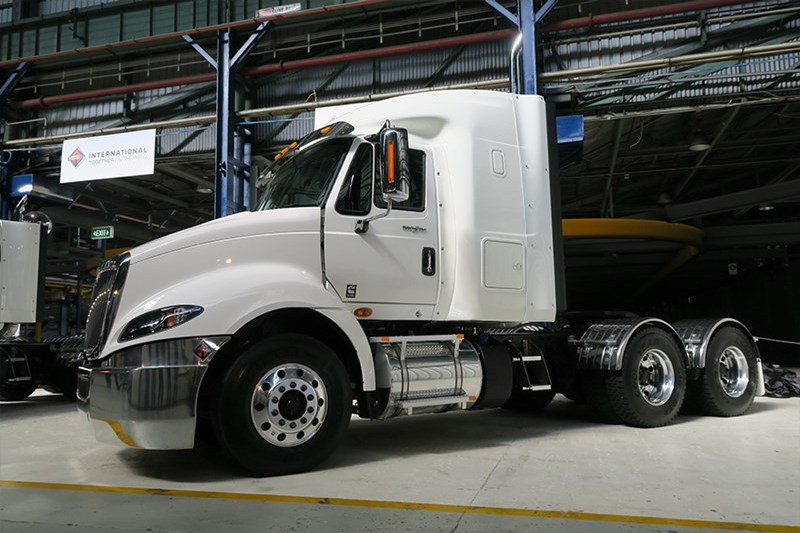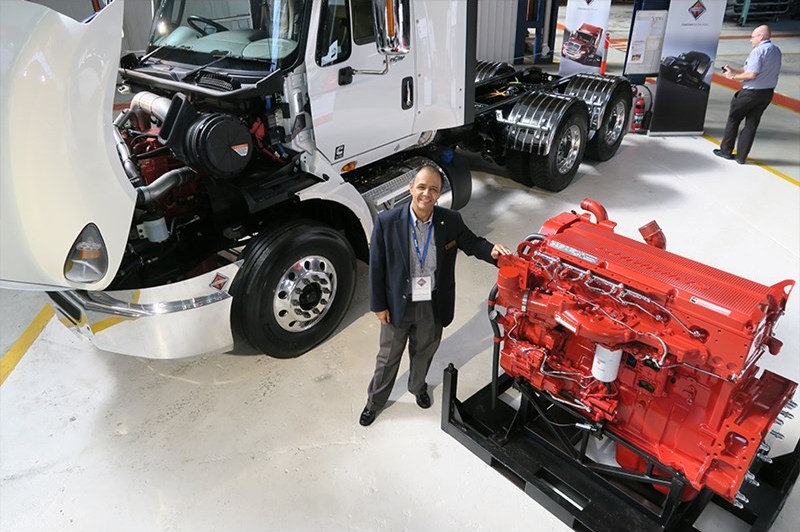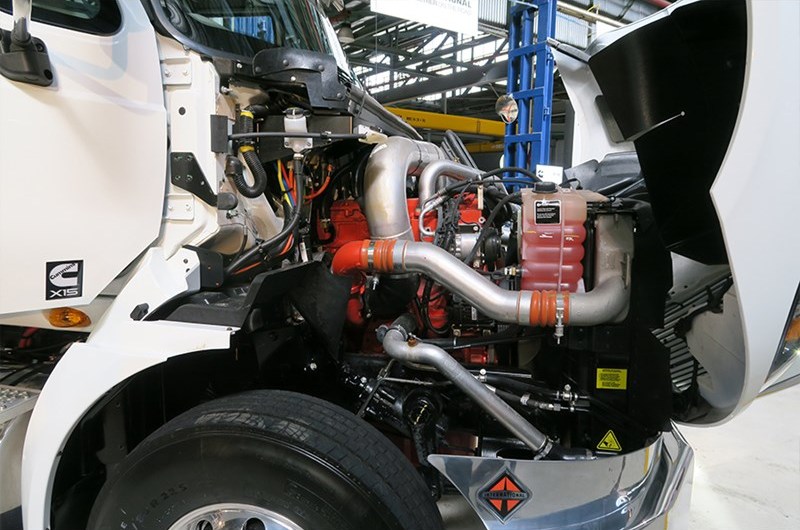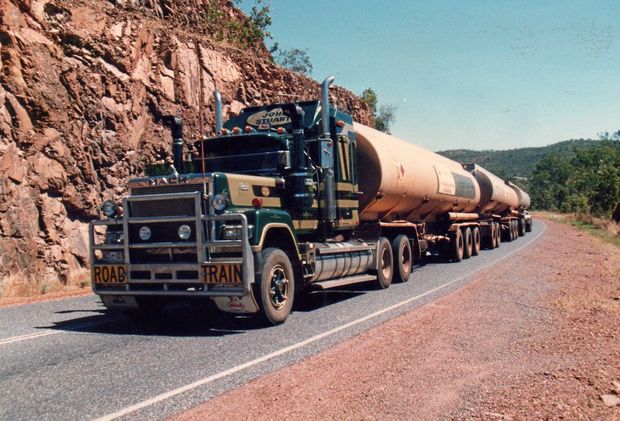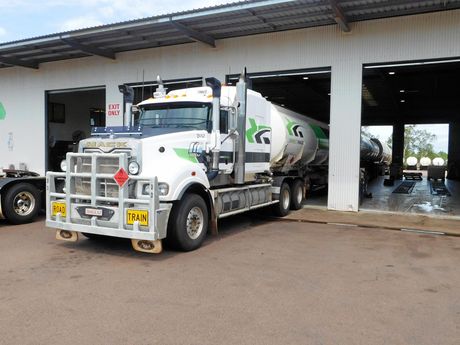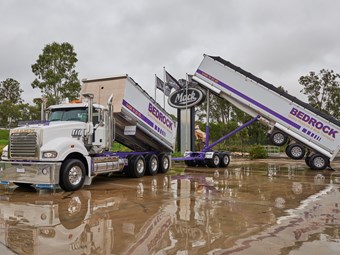
kscarbel2
Moderator-
Posts
18,886 -
Joined
-
Days Won
114
Content Type
Profiles
Forums
Gallery
Events
Blogs
BMT Wiki
Collections
Store
Everything posted by kscarbel2
-
Volkswagen cleared by EPA to sell repaired 2015 diesels Bloomberg / March 29, 2017 Volkswagen AG will soon do what's been impossible since its emissions crisis began: sell diesel-powered cars in the U.S. The company received approval from the EPA for dealers to sell 2015 model year diesels after updating the vehicles' emissions software, VW Group of America spokeswoman Jeannine Ginivan said. The software update is part of a required emissions repair approved by the EPA and California Air Resources Board. The repair will also include changes to diesel engine hardware, but dealers do not have to wait until the repair parts become available early next year, Ginivan said. "We are still finalizing the details of this program and will provide more information on its implementation at the appropriate time," Ginivan said in a statement. Volkswagen admitted in 2015 to rigging nearly 500,000 diesel cars to pass U.S. emissions tests. The company froze sales of new and certified used diesels in the U.S. while it worked with regulators on an approved fix. The company has set aside $24 billion (22.6 billion euros) to cover costs and fines related to the scandal. Significant milestone Reviving diesel sales marks a significant milestone in VW's efforts to recover from the scandal and rebuild its relationship with environmental regulators. It also returns a key product to dealer showrooms that attracted a cult-like customer base and accounted for about 20 percent of the VW brand's pre-scandal sales. Yet it's a mostly symbolic step. The sales approval only applies to about 67,000 diesels from the 2015 model, about 12,000 of which are currently in dealer inventory, Ginivan said. An EPA spokeswoman didn't immediately return messages seeking comment. Volkswagen has also said no new diesel models will be offered in the U.S. at least through model year 2018. The company is moving aggressively toward electric vehicles, signaling a diminishing role for diesel engines in the company's portfolio, especially in the U.S. The program will also eventually include used 2015 diesels the company has repurchased from owners through the 2016 settlement with U.S. regulators and owners, she said. Some customers have elected to keep their cars and receive restitution and an emissions repair under the terms of its $10 billion buyback.
-
Trump and Immigration (Illegal Immigrants in the US)
kscarbel2 replied to kscarbel2's topic in Odds and Ends
Evidence of how convoluted and hopeless things have become. ----------------------------------------------------------------------------------- Seattle sues Trump administration over threat to 'sanctuary' cities Reuters / March 29, 2017 The city of Seattle sued U.S. President Donald Trump's administration on Wednesday over its executive order seeking to withhold federal funds from "sanctuary cities," arguing it amounted to unconstitutional federal coercion. Seattle Mayor Ed Murray says the Constitution forbade the federal government from pressuring cities, “yet that is exactly what the president’s order does. Once again, this new administration has decided to bully.” “Things like grants helping us with child sex trafficking are not connected to immigration,” Murray said, adding: "It is time for cities to stand up and ask the courts to put an end to the anxiety in our cities and the chaos in our system." U.S. Attorney General Jeff Sessions threatened on Monday to strip Justice Department grants from cities and other local governments that choose to shield illegal immigrants from deportation efforts. Trump, who made tougher immigration enforcement a cornerstone of his campaign, directed the government in his Jan. 25 executive order to cut off funding to sanctuary jurisdictions. That order has yet to be put into effect, but Sessions' announcement seemed to be the first step in doing so. Trump administration officials say the immigration crackdown is focused on illegal immigrants convicted of serious crimes. Responding to the Seattle lawsuit, a U.S. Justice Department representative said in a statement: "Failure to deport [illegal] aliens who are convicted of criminal offenses makes our nation less safe by putting dangerous criminals back on our streets." Seattle’s action was the latest legal salvo over the Trump immigration order from local governments across the country, including the city of San Francisco and California’s Santa Clara County. Police agencies in dozens of "sanctuary" cities, including New York, Los Angeles and Chicago, have barred their officers from routinely checking on immigration status when making arrests or traffic stops. They have also refused to detain people longer than otherwise warranted at the request of federal agents seeking to deport them. Supporters of the policy argue that enlisting police cooperation in rounding up immigrants for removal undermines communities' trust in local police, particularly among Latinos. Murray said the goal of Seattle's lawsuit was to have the courts declare that federal authorities “cannot force our local police officials to be involved in federal immigration activities.” -
Chao says Trump to unveil $1 trillion infrastructure plan in 2017 Reuters / March 29, 2017 U.S. Transportation Secretary Elaine Chao said the Trump administration would unveil a $1 trillion infrastructure plan later this year. She did not provide any details on the funding. Chao said the infrastructure initiative would include "a strategic, targeted program of investment valued at $1 trillion over 10 years. The proposal will cover more than transportation infrastructure, it will include energy, water and potentially broadband and veterans hospitals as well." Chao's comments were the most detailed timetable from the administration about its plans to unveil a plan to modernize U.S. roads, bridges, airports, electrical grid and water systems. Chao said the administration plans to offer incentives for public-private partnerships rather than simply fund improvements. It’s unknown how much new federal funding the Trump administration would propose. Chao said the plan would aim to speed the processes for government projects. Earlier this month, Trump proposed $16.2 billion for the Department of Transportation's discretionary budget for fiscal year 2018, a reduction of 13 percent. The budget would eliminate $175 million in annual funding for the Essential Air Service, a program to support commercial air service to rural airports and end subsidies for Amtrak to operate long-distance train service. The Trump budget would also eliminate the Obama administration's "TIGER" grant program, saving $499 million. That program has been used to fund a variety of transportation projects, including high-speed and intracity rail, highway construction and transit bus systems.
-
The 1961 film says it is hosted by Herbert Hoover (1874-1964).
-
HPD Demo Truck Heads to the UK Jacobs Vehicle Systems Press Release / March 29, 2017' Jacobs Vehicle Systems' High Power Density (HPD) Demo Truck will be making a stop at the Beaconsfield Service Area on April 6th. Professional truck drivers will have the opportunity to try Jacobs' latest engine braking technology on the M40 and provide feedback. If you will be in the area, join us from 9:00 to 18:00 at Extra Motorway Services in Beaconsfield, UK. If you can't make it, watch our latest videos from previous HPD demos or visit www.jacobsdrivesthefuture.com. HPD Advantages 200% Increase Double the braking power at cruise speeds - The engine brake power is significantly increased at lower engine speeds compared to conventional compression release brakes. 175 kg Increase Increased payload for the retarding performance you need - Jacobs' integrated, simple design allows for reduced package and mass resulting in increased payload by providing all the retarding performance you need. 3,500 Euro Decrease Lower total cost of ownership - While providing increased foundation brake life, truck uptime, and higher resale value, Jacobs' HPD technology comes at a fraction of comparable retarder devices that offer the same power. . .
-
A possibility is Metalsa is supplying the frame components and Westport is performing final assembly. Metalsa will supply completed frame assemblies, or rails and crossmembers separately. Again, here's there customer list:
-
Transport Engineer / March 28, 2017 Goodyear has launched a new campaign which sees the tyre manufacturer guaranteeing that it will accept 100% of casings for retreading. The Customer Own Casing (COC) scheme means all casings, with no visual defects, can undergo retreading – helping fleet operators to reduce their total cost of ownership, says Goodyear. The company says its Multiple Life Concept – which combines regrooving and retreading – reduces tyre costs by up to 10% while it increases mileage by up to 25% compared to using two sets of new tyres. In addition, there are environmental benefits through using fewer materials in the process, and lower fuel consumption and CO2 emissions thanks to the extended performance of the retreaded tyre. The benefit of the COC scheme is that the operator knows the history of the tyres being retreaded. “Accepting more casings from our customers for retreading means one less worry for the vehicle operator. The Goodyear Multiple Life Concept maximises tyre performance, lowers running costs and improves the CO2 footprint,” says Grégory Boucharlat, Goodyear Dunlop’s director of retread operations EMEA. Goodyear’s 100% COC acceptance guarantee is available now and applies to tyre sizes 295/60R22.5, 295/80R22.5, 315/60R22.5, 315/70R22.5, 315/80R22.5 385/55R22.5 385/65R22.5 and 435/50R19.5. .
-
Land Line (OOIDA) / March 28, 2017 A trucking company in Virginia and four of its executives were indicted in a U.S. District Court on March 16 on 126 counts including more than 50 counts each of false statements and falsifying records. The trucking company was hired by the United States Postal Service to transport mail for more than half a billion dollars over the past 10 years. Since 1999, Gerald Beam, Garland Beam, Shaun Beam and Nickolas Kozel of Beam Bros. Trucking either encouraged or required employees to violate Federal Motor Carrier Safety Administration regulations, including hours-of-service regs, according to federal court documents. This was done by planning trips that could not be completed within HOS regs and encouraging drivers to falsify records of duty status. Additionally, Beam Bros. Trucking did not pay drivers for “on-duty” time as required by the Service Contract Act (SCA). SCA requires subcontractors hired by the U.S. government to pay employees for each hour or portion of an hour worked at a rate no less than minimum wage. According to SCA regulations, this includes waiting time. Only periods of time when an employee is “completely relieved of duty and long enough for him or her to effectively use that time for their own purposes” are considered “off-duty” when working under SCA. According to court documents, drivers for Beam Bros. Trucking may not have been aware of the SCA pay plan. Drivers were told they would not be paid for short rest periods, waiting for loads, etc. An indictment claims drivers were not informed of SCA pay requirements. Beam Bros. Trucking prevented drivers who were aware of SCA from sharing that information with fellow drivers and government agencies. Since the egregious cover-up of driver pay and violations of FMCSA regulations was done under a government contract, Beam Brothers was charged with Conspiracy to Commit an Offense Against the United States, among the many other charges. The indictment is seeking at least $40 million from Beam Brothers Trucking and the four named defendants.
-
No comment.
-
Iepieleaks / March 28, 2017 Scania seems to be working on a new generation of V8 engines. Well informed sources from Scandinavia inform Iepieleaks that there will be a new V8 engine with SCR only. That means that Scania is getting rid of the EGR sytem for almost the complete engine line! The new engine will have two turbo-chargers and one of them is a VGT turbo. The maximum output is said to be 760 horsepower, an increase of 30 horsepower compared with the existing model. The other engine ratings will be 520, 580 and 650. The 650 horsepower rating should be the most powerful engine that can be ordered with a manual transmission, but only in the R- cab. .
-
Commercial Motor TV - sponsored by DAF Trucks / March 27, 2017 .
-
Scania Group Press Release / March 28, 2017 In 2016, Scania saw a significant uptake in business relating to sustainable transport. The increase reflects a growing demand for both products and services. The number of vehicles that Scania sold that run on alternative fuels and hybrids increased by 40 percent in 2016, a proof point of the company’s efforts to lead the shift towards a sustainable transport system. In total, close to 5,000 such vehicles were sold in 2016. “The demand for vehicles that support the shift to sustainable transport is growing and so is the demand for services that support fleet owners in reducing fuel consumption, and consequently also both carbon emissions and cost. This proves that sustainability and profitability go hand-in-hand,” says Henrik Henriksson, President and CEO of Scania. Almost 40,000 of Scania’s customers’ drivers were trained in fuel-efficient driving in 2016. This is a year-on-year increase of 30 percent. Ecolution by Scania is another area that has shown significant growth. A consultancy service that on average saves 12 percent in fuel and CO2 emissions for customers, the number of Ecolution by Scania contracts signed in 2016 increased by 37 percent from 2015, to more than 2,700. For more than 25 years, Scania has produced commercial biofuel solutions, and today the company provides the largest variety of engines for alternative fuels on the market.
- 1 reply
-
- 1
-

-
Renault Trucks Press Release / March 28, 2017 Renault Trucks offers its customers vehicles enabling them to make their business grow. This film demonstrates that the new Renault Trucks vehicles are profit centers and reveals the Unique Selling Points related to the new range D (Distribution range) compared to the previous Renault Trucks range and compared to the competitors' range. .
-
Ford plans to invest an additional $350 million in Michigan plants Automotive News / March 28, 2017 Ford Motor Co. will add $350 million in new investments at two Michigan assembly plants on top of previously pledged spending. The automaker said Tuesday it will invest $200 million in its Flat Rock Assembly Plant for an advanced data center. It will also spend $150 million at its Michigan Assembly Plant in addition to what was pledged two years ago as part of the automaker’s contract with the UAW. The latest planned outlay at Flat Rock follows a $700 million spending plan announced by CEO Mark Fields in January. Both of this year’s announcements at Flat Rock -- which builds the Ford Mustang and Lincoln Continental -- are separate from a $400 million pledge for the factory that was part of the 2015 UAW deal. That UAW accord also included a Ford promise to invest $700 million in Michigan Assembly to re-tool the plant to build the Ranger and Bronco later this decade. On Tuesday, Ford said that changeover would require more spending. “Back in 2015, we hadn’t done a full-blown plan on how to convert the plant,” Joe Hinrichs, Ford’s president of the Americas, said in an interview. “Now that we’re in the implementation phase, it’s been a little more than we originally thought.” He called the initial $700 million for Michigan Assembly estimate “a little conservative” and said the added cost was not a surprise. The automaker also reaffirmed a $150 million investment in its Romeo Engine plant. That spending was also pledged in 2015 when Ford signed a four-year pact with the union. Ford’s investment will result in 130 created or retained jobs at Romeo Engine. Hinrichs said the number of new jobs will be “incremental.” In total, Tuesday's announcement brings spending across the three plants to $1.2 billion. Ford shares closed Tuesday up 1.7 percent to $11.65 a share. Hinrichs said Ford’s government affairs team informed the White House of its plans early today. In response, President Donald Trump tweeted at 6:36 a.m.: “Big announcement by Ford today. Major investment to be made in three Michigan plants. Car companies coming back to U.S. JOBS! JOBS! JOBS!” Hinrichs said today’s news wasn’t related to the “very, very big, very important” auto industry announcement Trump teased on his March 15 visit to the American Center for Mobility in suburban Detroit. “We had not had any discussions with the administration or given them a heads-up,” Hinrichs said. “We don’t believe this is what he was talking about.” State support In a related action, the Michigan Strategic Fund on Tuesday approved a $10 million performance-based grant and a state essential services assessment exemption worth $10.4 million over 15 years for the Flat Rock investment. The MSF said the Flat Rock investment will result in 650 qualified new jobs with the potential for 700 new jobs. The MSF also approved money for the Michigan Assembly and Romeo Engine projects, including a $2 million performance based grant; an alternative state essential services assessment exemption of $1.3 million over 15 years in Romeo; and an assessment exemption of $7.25 million over 15 years for Michigan Assembly. On Twitter, the Michigan Economic Development Corp.said all three Ford projects would generate more than $2 billion in total capital investment, create 800 new jobs and retain 3,600 jobs. ‘Good day’ Ford will begin re-tooling its Michigan Assembly Plant in Wayne in May 2018. The small car plant currently makes the Focus and C-Max. Hinrichs declined to say when production of those two products would stop to make way for the Ranger and Bronco. Ford said the changeover will take four weeks. “It’s similar to Dearborn,” Hinrichs said, referencing Ford’s 2014 transformation of its Dearborn Truck Plant to install the equipment to build the redesigned aluminum-bodied F-150 pickup. The Romeo Engine investment will allow the plant to build components for several vehicles, including the Ranger and Bronco, Ford said. The facility currently builds engines for the Super Duty, E-Series, Ford Shelby GT350 Mustang and Shelby GT350R Mustang. It makes engine components for F-Series, Mustang, Explorer and Edge. “UAW-Ford is proud of the total investments in three of our Southeast Michigan assembly and engine plants, which will lead to stronger job security for our members and continued support for the surrounding communities,” UAW-Ford Vice President Jimmy Settles said in a statement. Ford says it has invested $12 billion in its U.S. plants and created nearly 28,000 U.S. jobs over the past five years. “Any time we have major investment news for Michigan and the U.S., it’s a big deal for the economy,” Hinrichs said. “It’s a good day for Romeo, Wayne and Flat Rock. We’re excited to continue investing in the U.S.” Negative reaction Trump in his Tuesday morning tweet did not take credit for Ford’s news, but nevertheless drew scorn from Democrats and others. Steven Rattner, who served as head of former President Barack Obama’s automotive task force during the industry’s meltdown in 2008-09, said the president’s tweet was misleading. “The big news ended up being only 130 jobs in MI that were announced back in 2015,” Rattner tweeted. The Michigan Democratic Party also criticized Trump’s tweet. "Donald Trump taking credit for Ford's latest investment in Michigan is like a kid telling his friends he made dinner when his dad picked up a Hot-N-Ready from Little Caesars," Brandon Dillon, chairman of the Michigan Democratic Party, said in a statement. "These investments are the result of collective bargaining between UAW and Ford in 2015, made possible by President Barack Obama's faith in America's auto workers." U.S. Rep. Debbie Dingell, D-Mich., whose 12th district includes Ford's headquarters in Dearborn, said in a statement that Ford’s announcement was a cause to celebrate U.S. manufacturing. “Today’s announcement is further proof of Ford’s commitment to producing in Michigan and the United States," she wrote. "Ford’s roots run deep in Michigan’s 12th District, and these investments bolster the company’s dedication to building its highest-tech vehicles here in the U.S. and strengthen its commitment to American workers, who are the best in the world." Ford Press Release - https://media.ford.com/content/fordmedia/fna/us/en/news/2017/03/28/ford-investing-one-point-two-billion-in-three-michigan-facilities.html
-
(I posted here because the film relates to the "League of Nations", predecessor to the United Nations.) This is a great video. I'm sure many have never seen a film of Hoover or heard him speak. He was one of the great presidents. As Archie and Edith Bunker once sang, "we could use a man like Herbert Hoover again." Boy the way Glenn Miller played Songs that made the Hit Parade Guys like us we had it made Those were the days. And you knew who you were then Girls were girl and men were men Mister, we could use a man like Herbert Hoover again Didn't need no welfare state Everybody pulled his weight Gee our old Lasalle ran great Those were the days!
-
International returns with four pronged attack
kscarbel2 replied to kscarbel2's topic in Trucking News
International Trucks officially returns to Australia Prime Mover Magazine / March 23, 2017 The International brand has officially returned to Australia with the launch of the new ProStar range in Melbourne last night. The much-anticipated unveiling ceremony at the Iveco Australia plant in Dandenong officially put an end to a two-year waiting period that began with an announcement by International parent company, Navistar, to bring the brand back to Australia at the 2015 Brisbane Truck Show. International-branded trucks had been manufactured and or assembled at Iveco’s heritage-listed facility from 1952 through to 2001. Iveco Australia once again secured the distribution rights for the brand in late 2016 and has since been working on adapting the ProStar range to the local Australian operating environment. According to Michael Jonson, Managing Director of Iveco Australia, the return thus marks a “homecoming” to the location where thousands of International commercial vehicles originated. “Welcome home, International,” he said in Melbourne. “The brand’s DNA still runs deep today with the current Iveco ACCO range sharing its lineage with earlier ACCOs developed under the International brand.” The ProStar, the first model to be sold under the revived International label, will be available in day cab, extended cab with a fully ADR-compliant bunk, and integrated full-size sleeper cab variants, and in a choice of five wheelbases. A key selling point of the new range, according to International Engineering Manager, Adrian Wright, is the short ‘bumper to back of cab’ (BBC) configuration, making the ProStar models suitable for a variety of combinations. “The day cab will fit in front of virtually any Australian trailer set,” he said. “The ProStar is also well suited for truck and dog work, for use as a 34-pallet B-double, 36-pallet B-double and even B-triple and two trailer road train work.” According to Jonson, initial dealer feedback on the revived brand has been exceptional: Iveco reportedly planned to start off with a batch of around 100 units, but dealer interest was so strong that more trucks will be ordered from Navistar. Versatile design One aspect that convinced Iveco dealers was the new range’s sturdy design: To ensure longevity and durability in demanding Australian conditions, Wright said the 2.1m-wide cab is constructed from high strength steel panels, zinc coated on both sides then fully dipped in e-coat primer, while the new models also benefit from a high tensile steel chassis with 9.5mm thick side members and huck-bolted cross members. All vehicles will be powered by the latest E5 Cummins X15 SCR engine, producing 550hp (410 kW) and 1850 lb. ft. (2,508 Nm) of torque. “The engine, an evolution of the X15e5, is well proven in the local market and has been extensively tested here by International in conjunction with Cummins,” Wright said. Coupled to the engine is a choice of either an Eaton 18-speed manual, which features an effort-reducing ‘air over hydraulic’ clutch, or an Eaton ‘UltraShift Plus’ 18-speed automated manual (AMT). Power to the rear Meritor tandem axles is provided via a Dana SPL driveshaft, and traction is aided by power divider lock and cross locks on both rear drive axles. Up front, the models use Meritor MFS axles with aluminium alloy hubs for reduced tare weight, while the suspension is three-leaf parabolic taper-leaf unit with 6,500 kg capacity. Rear suspension comes courtesy of a Hendrickson in the guise of the Primaax-EX Air Tandem, se -up for a 20,900kg capacity. On the safety front, the ProStar features ABS brakes with Automatic Traction Control; and trucks specified with the UltraShift Plus transmission are also equipped with Hill Start Aid. Inside the cabin, Wright said International engineers have concentrated on delivering a working environment, “that delivers high functionality and ergonomic design”. Ambitious outlook “The ProStar offers a tried and proven formula that has been missing here for several years,” Wrigth explained, adding more models and variations will follow once the initial rollout is finalised. “It’s an innovative and efficient truck in many ways, but also has very solid and proven fundamentals that will appeal to local operators. “The trucks have a proven drivetrain package and strong underpinnings to handle Australia’s tough geographic and climatic conditions. The commonality and widespread availability of the drivetrain componentry allows for easy serviceability and maintenance leading to reduced operating costs. “When combined with the latest engine technology from Cummins and class-leading aerodynamics, you get the best of both worlds.” Yesterday’s launch event was attended by a number of senior executives from Navistar in the US to underline the importance of the project for both Navistar and Iveco Australia. “The return of International to Australia has been eagerly awaited, especially given the high standing the brand enjoys here courtesy of earlier models and a very long and successful pedigree,” said Federico Palomo, Vice President for Global Export – adding the brand was finally back where it belonged. “These historical aspects aside, we also know that prospective customers in Australia are also extremely excited by the outstanding features and benefits that the new ProStar models will deliver to their operations. “There was an obvious gap in the local market for a high quality and versatile, yet affordable North American-style truck that could get the tough jobs done with a minimum of fuss. Navistar is extremely pleased to have worked closely with Iveco Australia to bring the International ProStar to market down under.” -
Trade Trucks AU / March 24, 2017 Storied brand unveils slick bonneted Prostar day cab and tipper, extended cab, and sleeper International’s tilt at returning to Australian prominence will centre on four Prostar versions marketed through Iveco and related dealerships. Flagged by Navistar at the last Brisbane Truck Show, the project, which is just short of two years in the making, made its official debut this week with unveilings to dealers and the industry media. "Having the International product added to our very extensive product range already, having the conventional 15-litre, is a real cap across out entire product range," Iveco Australia and New Zealand MD Michael Jonson says. While the final dealership network set-up is still being finalised, Australia and New Zealand executive GM Ray Osgood of parent firm CNH Industrial (CNHI) reveals Iveco’s sister-dealerships for CNHI's agriculture-focused Case IH will have a role. He also noted name-checked the 15-litre Cummins engine, saying it was "something we haven’t had in our range" and – with 100 trucks said to have been spread through about 70 dealerships – suggested that perhaps there were not enough. Iveco says an initial list of outlets is expected to be announced in the coming weeks. "Our preference is to begin operating through a core group of dealerships that meet our stringent requirements and then strategically increase the network footprint through the appointment of additional dealerships – these could be standalone International dealerships and or parts and service outlets." Iveco Australia dealer development manager Matteo Gambaro says "From a parts and service perspective, we’re also fortunate that Iveco full line dealerships and service and parts outlets already have a thorough knowledge and understanding of much of the ProStar’s componentry thanks to a number of existing Iveco models featuring Cummins, Hendrickson, Eaton and Meritor equipment, as well as their ongoing support of the previous generations of International products. "Further to this, I can confirm that all International dealers will also be authorised Cummins dealers. "We’re confident that our initial Dealer appointments will be well positioned to suit the majority of ProStar buyers in metropolitan and rural areas, with this support to only get better as the year progresses." International engineering manager in Australia Adrian Wright noted that the launch presentation footage eschewed North American images for that of other countries where higher weights, harsh conditions and multi-combinations were comparable the Australian experience. The design of the right-hand-drive cab and aerodynamic front end and other innovations for Australian conditions were a joint effort US-Australian effort. But Wright described the present iterations as ‘Phase 1’. "The combination of the latest engine technology from Cummins and superior aerodynamic performance saw the prototype return some impressive fuel consumption figures in local, real world testing," Wright says. "Aerodynamics makes a big difference to truck fuel efficiency – about half of the fuel that the truck uses goes towards pushing it through the air, so if you achieve a 10 per cent improvement in aerodynamics this translates to about a 5 per cent improvement in terms of fuel economy. "Compared to some more traditionally styled, flat fronted vehicles, the ProStar is as much as 10 per cent more aerodynamic. Even running some basic numbers the fuel savings – and therefore cost savings – that can be made over the life of the truck are enormous." Wright emphasises the visibility advantages helped by the nose design and wraparound windscreen. "The line of forward vision for the driver onto the road ahead is unobstructed thanks to the sloping hood, lower placed instrument panel and wrap around windscreen," Wright says. "The ProStar again boasts best-in-class performance in this area comparing very favourably to other conventional cabs and even cab over trucks." Crucial details All vehicles will be powered by the latest E5 Cummins X15 SCR engine producing 550hp (410kW) and 1850 lb ft (2,508 Nm) of torque. It features high pressure injection and the Cummins Emissions Solutions (CES) system to comfortably meet Euro5 emissions requirements. Cooling is through an ‘Over and Under’ system with CAC above radiator and Horton Drivemaster air operated two-speed fan drive, ensuring optimum performance in hot Australian conditions. Coupled to the engine is a choice of either an Eaton 18-speed manual with the Eaton UltraShift Plus 18-speed automated manual is optional. Power to the rear Meritor tandem axles is via a Dana Spicer SPL driveshaft and traction is aided by power divider lock and cross locks on both rear drive axles. Up front, the models use Meritor MFS axles with aluminium alloy hubs for reduced tare weight while suspension is three-leaf parabolic taperleaf with 6,500kg capacity. Rear suspension comes courtesy of a Hendrickson Primaax-EX Air Tandem set-up with 20,900kg capacity. The day cab comes with a 4.3 metre wheel base "which allows you to meet that critical dimension of 5.4 metres from the bumper to the centre of the fifth wheel". Bumper to back of cab lengths are 112 inches, 138 inches and 141 inches. The sleeper cab inner-spring mattress is 2170x700mm. The tipper wheel base is 5 metres and both are said to be suitable for performance based standards. Gross vehicle mass and gross combination mass are 24.5 tonnes and 90 tonnes respectively. Safety stakes The ProStar features Benix ABS brakes with automatic traction control. Trucks specified with the UltraShift Plus transmission are also equipped with Hill Start Aid. They can also benefit from the optional ‘ADEPT’ package, a suite of innovative electronic features capable of further reducing fuel consumption by up to 6 per cent. The system utilises load, speed and grade sensing software, making minor adjustments to speed, power and transmission gear selection to take advantage of vehicle momentum for better fuel economy. The ADEPT package also includes‘SmartTorque2 and SmartCoast technology. SmartTorque2 is the next generation of torque management technology from Cummins. The system senses both the selected gear and overall engine load as a result of the gross vehicle weight, aerodynamic drag and road grade. All models come standard with a park brake warning alarm that sounds if the key is off and the driver’s door is opened without the park brake being applied. The trucks have dual, polished aluminium fuel tanks with 720 litres total volume – alternative fuel tanks options are available to meet specific applications. The AdBlue tank is 90 litres. The models feature front under-run protection and LED headlamps with integrated daytime running lamps for added visibility during day or night. Foreign contingent In attendance from Navistar were vice president – global export Federico Palomo, director of sales Dicky Commandeur, chief engineer Marco Anaya and director of marketing and strategy Octavio Gonzalez. "The return of International to Australia has been eagerly awaited especially given the high standing the brand enjoys here courtesy of earlier models and a very long and successful pedigree," Palomo says. "These historical aspects aside, we also know that prospective customers in Australia are also extremely excited by the outstanding features and benefits that the new ProStar models will deliver to their operations. "There was an obvious gap in the local market for a high quality and versatile, yet affordable North American-style truck that could get the tough jobs done with a minimum of fuss." Specifications Engine: E5 Cummins X15 SCR engine Output: 550hp (410kW) and 1850 lb ft (2,508 Nm) of torque Transmission: Eaton 18-speed manual with the Eaton UltraShift Plus 18-speed automated manual is optional Driveshaft: Dana Spicer SPL250XL main and SPL170XL inner axle shaft Front axle: Meritor MFS 14-142A wide track Front suspension: Parabolic Taperleaf Rear axles: Meritor RT46-160GP Rear suspension: Hendrickson Primaax-EX Air Tandem .
-
Volvo cancels D16; Mack cancels Titan tractor
kscarbel2 replied to kscarbel2's topic in Trucking News
Mack and Volvo announce the end of the 16-litre in the North American market. Power Torque Magazine / March 25, 2017 It’s the end of the line for the Volvo D16 and Mack MP10 engine in the American market with both manufacturers announcing the withdrawal of the engine from the product line up, with each company citing “diminishing demand” as the reason for the cancellation. Introduced into the U.S. in 2005, the D16 offered displacement of 550 to 625 hp – mainly at heavy haul applications. Similarly, Mack Trucks, will no longer be offering its large displacement MP10 engine, which is based on the D16. Mack is also discontinuing sales of its Titan heavy haul prime mover as well. “The decision to withdraw the D16 and MP10 16 litre is the result of limited market demand for this engine displacement and the long-term investment that would be required to maintain the D16 for the unique operating requirements of the North American market,” a spokesperson for Volvo Trucks said. The D16 engine was available in Volvo’s VNL and VNX models. The VNL will continue to be available with the Volvo D11, D13 and Cummins X15 engines, while production of the VNX – introduced in 2013 – will be placed “on hold” though it will remain in Volvo’s product lineup for now. The company is currently evaluating solutions that will allow it to offer it in the future. In the interim, it intends to offer an ‘X-package’ for the VNL model, providing the ride height and heavy-haul attributes of the VNX with either the Volvo D13 or Cummins X15 engine,” the spokesperson added. Sources within the industry suggest that the engineering development costs necessary to calibrate both the D16 and MP10 engines for full Euro 6 emissions compliance will be too expensive to justify keeping either engine in the European product range, resulting in their withdrawal from global sales for sophisticated markets by the close of 2017 or early 2018. This would leave both Volvo and Mack dependent on their 13-litre engine range for most configurations, augmented by the availability of the Cummins X15 engine option. -
ZF’s efficient automatic commercial vehicle transmission is chosen by truck manufacturers in China and Turkey TraXon Torque shows off its broad capabilities for the first time in a mobile crane The basic TraXon system is currently being tested on a ZF bus, while the future-oriented TraXon hybrid application is already installed in ZF's Innovation Truck Best-in-class efficiency combined with greater function and innovation, the modular design can be customized for almost any heavy commercial vehicle – making it attractive on a global level. Truck manufacturers who have purchased the unique ZF-TraXon automatic transmission include MAN, Iveco and, most recently, Ford Trucks and Foton in China. Additionally, the product celebrates its launch in a Liebherr mobile crane. Meanwhile, the ZF Innovation Truck is demonstrating the TraXon hybrid's practical advantages and a ZF test bus fitted with the basic transmission is racking up test miles. “We are very proud to have won the new TraXon orders and first-time applications,” says Fredrik Staedtler, head of the ZF Commercial Vehicle Technology Division. “Ultimately, they show that our modular system meets all of our developmental requirements – internationally and across numerous vehicle types.” By combining five different start-up or shifting modules in the basic transmission model, current and future manufacturers' demands regarding automatic transmissions for heavy commercial vehicles are covered. Up and coming TraXon will be launched this year in the Chinese market on Foton trucks. ZF will supply the model with the optional Intarder integrated transmission brake. The basic transmission model, which comes with 12 or 16 gears, offers extremely high efficiency – primarily through its ability to handle up to 3,400 Nm of torque (overdrive version), its high transmission-ratio spread of up to 99.7 percent and the outstanding, best-in-class power-to-weight ratio. Included are ZF's innovative electronics on a uniform software platform, combining the predictive shifting strategy, PreVision GPS, as well as a rolling and rock-the-vehicle-free function. TraXon is also the first choice of Ford Trucks. It is a standard component in the new and recently launched Ford Trucks series, with a Euro-6 driveline. The new orders from China and Turkey will see the first volume production of ZF's innovative TraXon outside the European Union (EU). European customers are also relying on TraXon. The transmission's volume production launch has been successful at MAN, and Iveco will follow suit. “With TraXon, we are continuing the outstanding cooperation we have enjoyed with Iveco in the past decades. The innovative modular transmission system is seamlessly replacing the ZF-AS Tronic used up until now,” adds Staedtler. ZF's innovative TraXon will also be used outside the truck segment Flying high Heavy-duty trucks with a gross vehicle weight rating exceeding 200 tons will benefit from comfort features such as high shift and start. The launch of the TraXon Torque model installed for the first time into the Liebherr LTM 1300-6.2 mobile crane is a prime example of these features. The crane has a total weight of 72 tons and is equipped with a 455 kW engine handling a maximum load of 300 tons. Rather than having a standard dry single or twin plate clutch, the basic TraXon transmission is combined with the torque converter clutch module. At extremely high input torque and in lower gears, it ensures non-wear starting as well as gentle and comfortable maneuvering, all at low life-cycle costs. The engine-dependent PTO is an additional option for mobile cranes. Regardless of the driving speed, this device provides very high torque to the auxiliary systems. ZF also offers a total of four reverse speeds as an additional option within TraXon, which benefits other specialized truck applications – such as those vehicles used in highway construction work that require speed in reverse. As with the previous TC Tronic HD model, the TraXon Torque is also available on vehicles that weigh considerably more, such as the Liebherr LTM 1750-9.1 with a gross vehicle weight rating of 108 tons and 750 tons load. Most of the Liebherr mobile crane product family will be switched over to the new transmission. Diverse modules The TraXon hybrid configuration has been installed in ZF's current Innovation Truck and demonstrates the benefits of driveline electrification for long-distance trucks. It comes with a 120 kW and 1,000 Nm electric motor as well as a separating clutch in the bell housing of the transmission. This enables all hybrid functionalities, including recuperation, electric maneuvering, start/stop functionality and performance support from the combustion engine, or boosting. Additionally, in generator mode, the hybrid module can be integrated into the power supply of other units, such as refrigerated transport. In any scenario, the TraXon Hybrid contributes toward reducing fuel consumption and truck emissions. “It is true that the approximately five percent savings for long-distance trucks is below those values typically seen in electric delivery trucks or even passenger cars. Nevertheless, due to the considerably higher mileage and fuel consumption of long-distance driving, hybrid technology is an economic and environmentally friendly solution that pays for itself fairly quickly,” explains Staedtler. Another market segment suitable for the TraXon transmission is that of passenger transport and ZF is currently evaluating an application of the basic transmission on a test bus. Modern passenger transport vehicles require transmissions capable of returning fuel savings with heavy loads while providing reliability and driver and passenger comfort. TraXon meets all of these requirements thanks to the variable, smooth and quiet gear transitions. At six decibels lower than its predecessor, the AS Tronic, TraXon returns a 35 percent improvement.
-
Owner/Driver / March 3, 2017 Look no further for a comprehensive list of truck shows in Australia for 2017! It’s a new year and that means there is a huge line-up of truck shows in the 12 months to come. So what will we see this year? From big metropolitan truck shows to charity convoys, there will be an event for all truck lovers in 2017! The biggest event on the trucking calendar, the Brisbane Truck Show is hitting Brissy this year, but there are also loads of local and regional events for you to check out. Check out the more information link to see the official page for each event, and click the ‘map’ link to get directions to any of the events through Google Maps. Don’t forget to check back on this page at a later date as some event details won’t become known until the date approaches. March Show Name: Australian White Truck Muster Date: 18th & 19th March Place: Kyabram, VIC More information: Official Website Directions: Map Show Name: Oaklands Truck Show Date: 18th & 19th March Place: Oaklands, NSW More information: Official Website Directions: Map Show Name: Penrith Working Truck Show Date: 19th March Place: Museum of Fire, Penrith, NSW More information: Official Website Directions: Map Show Name: Harden Truck & Tractor Show Date: 19th March Place: Harden Murrumburah Showgrounds, NSW More information: Official Website Directions: Map Show Name: LBRCA Conference Date: 31st March & 1st April Place: Dubbo, NSW More information: Official Website Directions: Map April Show Name: Canberra Convoy for Cancer Families Date: 2nd April Place: Exhibition Park in Canberra (EPIC), ACT More information: Official Website Directions: Map Show Name: Haulin' the Hume Date: 8th & 9th April Place: Clarendon Showgrounds to Yass, NSW More information: Official Website Directions: Map Show Name: Hotel Tudor Family Truck Show Date: 16th April Place: Woodberry, NSW More information: Phone the Hotel Tudor and ask for Kim Forrest on (02) 4966 3211. Directions: Map Show Name: Camp Quality Victoria Convoy Date: 30th April Place: Avalon Airport to Tabcorp Park, Melton, VIC More information: Official Website Directions: Map May Show Name: Burragorang Valley Coal Carters Reunion Date: 6th May Place: The Oaks, NSW More information: Official Website Directions: Map Show Name: Heritage Truck Association Australia's Annual Truck Show Date: 20th & 21st May Place: Rocklea, QLD More information: Official Website Directions: Map Show Name: Sydney Classic & Antique Truck Show 2017 Date: 28th May Place: Penrith, NSW More information: Official Website Directions: Map August Show Name: Casino Truck Show Date: 5th August Place: Casino, NSW More information: Official Website Directions: Map September Show Name: Clarendon Classic Rally Date: 16th & 17th September Place: Clarendon, NSW More Information: Official Website Directions: Map Show Name: North American Commercial Vehicle Trade Show Date: 25th-29th September Place: Atlanta, Georgia, USA More Information: Official Website Directions: Map Show Name: CAT/TNT Car Carrying Reunion Date: 30th September Place: Wagga Wagga, NSW More Information: Call Lila Wood on 02 6925 1868 or email lilawood@bigpond.com Directions: Map October Show Name: Australasian Road Safety Conference Date: 10th & 12th October Place: Perth, WA More Information: Official Website Directions: Map
-
Big Rigs / March 28, 2017 In 1982, a young Dick David purchased the BP Depot in Katherine NT and the name Dick David Fuel Supplies was on the move. Dick had previously been a driver and road boss in the Buntine Roadways Group and had learnt some valuable lessons in the running of a transport company during his time with Noel Buntine. With his knowledge and contacts in the northern pastoral industry, the business grew with fuel sales and delivery to the pastoral companies, road houses, mining ventures in the Top End. Later trading as Australian Fuel Distributors (AFD) the fuel depots in Tennant Creek, Alice Springs, Mount Isa, Darwin, Cloncurry and Kununurra were added to the fold. The business evolved to be a major fuel and lubrication supplier to northern Australia. Dick retired in 2003 selling the business to son Brooke, who took the business to another level with the purchase of retail sites rebranded as Gull Fuel and Ausfuel and the transport arm that has become Direct Haul. With cartage contracts to other major fuel suppliers and mining companies, Direct Haul increased its fleet. In 2003, Brooke David sold the business in 2003 to Puma Energy, a global energy corporation. The purchase fitted well with Puma's future expansion plans into Australasia. Direct Haul currently hauls around a billion litres of fuel each year with a fleet of eight prime movers pulling quad trailers, 16 prime movers on triple trailer work, one B-Double and 11 local trucks working out of depots in Darwin, Katherine, Alice Springs and Kununurra. Just to give an idea of the capability, a Quad in maximum configuration , tri-drive and tri-axle dollies has a GCM of 165 tonnes, up to 53.5 metres in length can carry 130,000 litres of diesel, a big responsibility for the drivers. Direct Haul's scheduling section has a number of old hands who can advise drivers of road conditions and possible hazards to get their load to the customer on time with a minimum of fuss. The fleet of trucks and trailers are washed in the in-house wash bay after every trip, rims polished regularly and cleaned inside making the fleet always look a credit to the company and the drivers. Direct Haul has evolved into a big player in the fuel cartage business in the Top End but still seems to be able to keep the personal touch to the end users, old traditions live on. .
-
Trade Trucks AU / March 24, 2017 New system allows drivers to have a ‘personalised workplace’ New Volvo FH, Volvo FM and Volvo FMX models will have latest in-cab upgrades aimed at improving navigation and driver-comfort features. Volvo Trucks says the upgrades will allow drivers to experience more efficient vehicle handling. The new track navigation system is easy to access and includes a touchscreen system. Volvo Trucks chief project manager Anders Edenholm says the new system for services and infotainment allows drivers to "personalise their workspace". "For example they can listen to their favourite local radio station no matter where they are, and they can have hands-free access to both their personal phone as well as work phone," he says. "Overall this helps create an enhanced and safer driving experience. "It increases the feeling of home when drivers are away for long periods of time." The design of the system focused on driver comfort, Edenholm says. "Because Dynafleet OnBoard and Navigation are integrated, drivers can receive messages with GPS coordinates and in just with a few seconds start navigating to their next assignment. "More time with hands on the steering wheel and eyes focused on the road means a safer and more productive driver." Other features include push-to-talk button for voice control on the steering wheel, as well as access to media streaming services such as Spotify, Deezer and TuneIn, as well as DAB [Digital Audio Broadcasting] and DAB+. .
-
Trade Trucks AU / March 23, 2017 Sydney-based Bedrock Quarry Products & Bulk Transport looked to a big 685hp Mack Super-Liner Tridem for a high productivity, 48-tonne payload, Performance-Based Standards (PBS) combination. The PBS-approved Super-Liner Tridem and 5-axle dog trailer were handed over at VCV Sydney West, with Mack Trucks Global Senior Vice President, Govi Kannan, and Mack Trucks Australia Vice President, Dean Bestwick in attendance. Mack Trucks Sales Manager at VCV Sydney West, Michael Inzitari, says Bedrock Quarry Products were looking at ways of increasing productivity and payload in supplying quarry materials to major civil contractors and concrete plants. "For years and years, sand and gravel was mined out of the Sydney basin for concrete and construction," Mr Inzitari said. "With those quarries now closed, the sand and gravel is pulled from further away − up the central coast and down the south coast, so making the trip in a normal truck and dog just doesn’t make sense when you’re only carrying a 32 to 33 tonne payload." Through the PBS scheme, VCV Sydney West were able to offer Bedrock Quarry Products the potential to achieve higher productivity and the best possible payload through an innovative and optimised design. "We’re constantly looking at ways of increasing our productivity," said Director of Bedrock Quarry Products & Bulk Transport, Mick Colley. "This Super-Liner Tridem that Mack developed can get about a 48 tonne payload - that’s about one and a half of the previous truckloads, and that’s a huge advantage for our business." "We have been using Mack trucks for years now, and have an entirely Mack fleet. Quarry work can be rough, and these trucks are built and get the job done day after day. "Now Mack are combining their toughness with the latest in innovation and technology, which means they’re the obvious choice for my business." Mack Trucks Australia Vice President, Dean Bestwick, says Mack Trucks is excited and proud to continue to partner closely with Bedrock Quarry Products & Bulk Transport. "Bedrock has made the decision, time and time again, to carefully select Mack to build their trucks," Mr Bestwick said. "Their fleet of 13 is comprised entirely of Mack trucks, including three 3-axle dogs, five PBS 4-axle Dogs, two PBS 5-axle dog trailers, one 25 metre B-Double, an 8-wheeler rigid and the newly acquired Super-Liner Tridem. "It’s really satisfying to produce customised trucks that are a perfect fit for the job with unmatched reliability, durability and application excellence; ultimately increasing productivity and profitability for our customers." As other customers also look to increase payload, Dean says the delivery of the PBS Mack Super-Liner Tridem showcases the brand's commitment to application excellence whilst leveraging the latest technology and innovative designs. "Bedrock Quarry Products & Bulk Transport pride themselves on prompt, efficient and reliable transportation of quarry products to each and every customer and Mack stands behind our trucks and our customers in everything they do," Mr Bestwick said. The Mack Super-Liner is fitted with the liftable pusher axle with HLM2 suspension, to allow reduced tyre wear and drag when empty running. The National Heavy Vehicle Regulator (NHVR) approved and PBS compliant combination will allow Bedrock Quarry Products to carry an estimated combined payload of 48 tonne, across an overall vehicle length of just over 24 metres. The Super-Liner features a custom Sloanebuilt Trailers aluminium tipping body and quin-dog trailer, ensuring the lightest tare weight while still achieving maximum strength and durability. .
BigMackTrucks.com
BigMackTrucks.com is a support forum for antique, classic and modern Mack Trucks! The forum is owned and maintained by Watt's Truck Center, Inc. an independent, full service Mack dealer. The forums are not affiliated with Mack Trucks, Inc.
Our Vendors and Advertisers
Thank you for your support!



